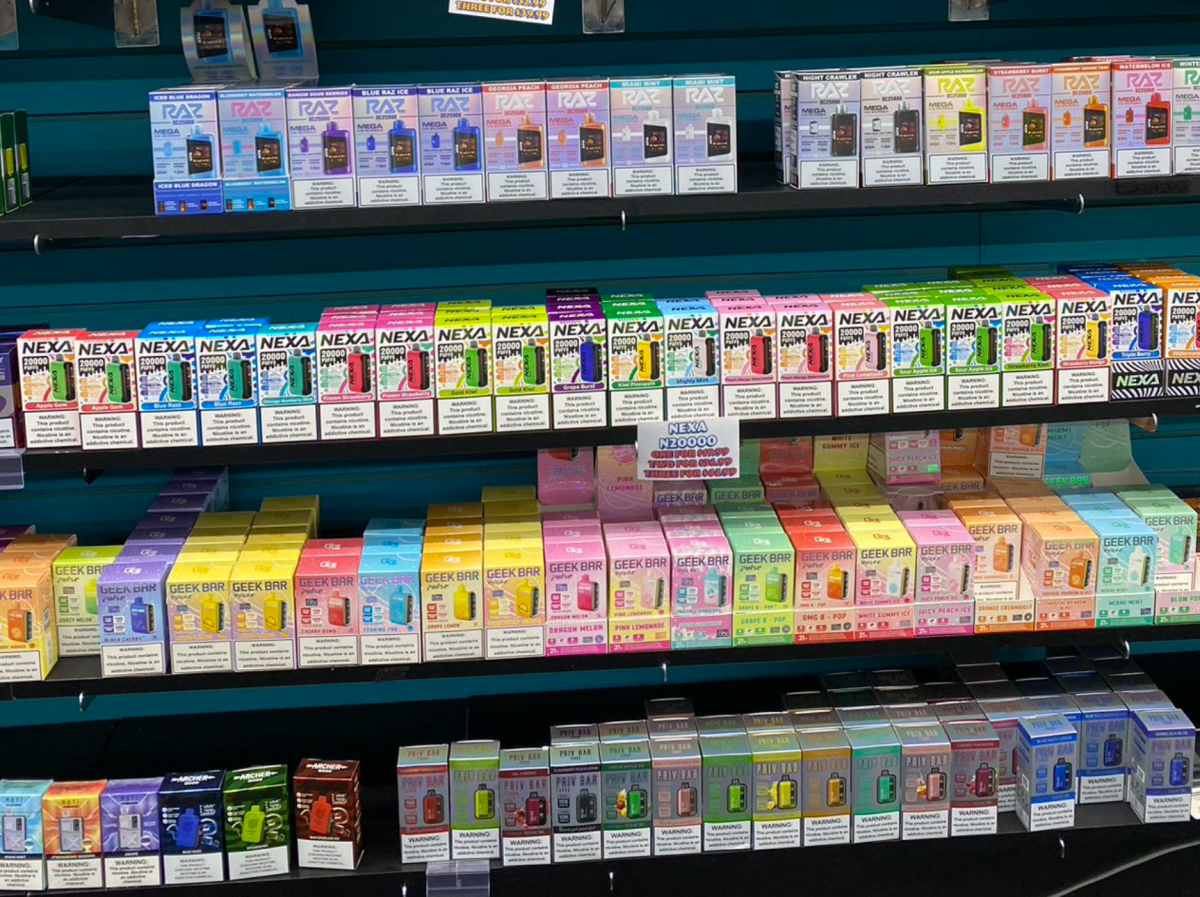
According to the updated trade data from the General Administration of Customs of China, in May 2024, China's exports of e-cigarettes to the United States amounted to approximately $336 million, an increase of 2.4% compared to the previous month and a 34.9% increase compared to the same period last year. The export volume was approximately 7,649.48 tons, an increase of 2.57% month-on-month and a 44.61% increase year-on-year.

The United States, as the world's largest e-cigarette market, has always been an important territory that major e-cigarette companies compete for, and is also one of the most fiercely competitive markets. Although some e-cigarette companies may currently face challenges entering the US market, the industry generally believes that the importance of the US market cannot be ignored, and it is a key area that must be valued and actively pursued in the long-term strategy.
Recently, 2FIRSTS gained insight into the current status of the American e-cigarette market by engaging with several industry professionals.
Distributors Hesitant to Accept "Old Stock" as Demand for New Products Continues to Rise
An e-cigarette industry professional in Texas provided an overview of the market in the state. Texas is considered one of the most competitive areas in the e-cigarette market in the United States, with Houston and Dallas being preferred entry points for new products entering the American market. This is because these two markets are more receptive to new products and have a fast turnover rate, allowing products to quickly gain market feedback. Additionally, once a product finds success in these areas, its influence will rapidly spread to surrounding regions.

According to feedback from industry practitioners, in these two markets known for rapid iteration, many distributors are only willing to sell new products with strong gimmicks, and are no longer interested in older products with fewer features. For these products, they only want to accept brand replacements with new products, or to consign them.
Some industry practitioners also believe that some novel and unique products can attract the attention of distributors and achieve considerable sales in the early stages. It is this situation that has made the competition for new products in the American market increasingly fierce. The screens of new products are getting bigger; the number of atomizing cores is increasing, from "dual cores" to "four cores," and even "six cores"; the number of puffs is also constantly increasing, with some claiming to be able to use 2000 puffs in just 1 milliliter; in terms of smart functions, many innovations have been born, such as phone access and AI voice wake-up functions.

Consignment Model Intensifies Competition, Small Businesses Lack Ability to Cope
Furthermore, for e-cigarette companies operating in the US market, the consignment model mentioned above is not unfamiliar. Consignment refers to the practice of some e-cigarette companies adopting fast-moving consumer goods sales strategies, directly supplying products to retail stores, promoting them locally, delivering goods before receiving payment, and paying a certain commission.
A U.S. market practitioner further explained the consignment model of e-cigarettes in the market: From the perspective of wholesalers, first-tier wholesalers need to pay the manufacturer in order to purchase goods. Typically, first-tier wholesalers will set a trial sales period of 30/60/90 days based on their partnership with second-tier wholesalers and agreements with the brand. During this period, if product sales are poor, second-tier wholesalers can return the goods and receive a settlement at the end of the term; on the other hand, if sales are strong, second-tier wholesalers will need to pay again to replenish inventory after selling out.
From the perspective of retail stores, brands will first try to provide a certain amount of goods to retail stores for trial sales. This method reduces the financial risk for the stores and helps the higher-level wholesalers expand their sales channels. For the brand, it helps to accelerate the product launch process. After the trial sales end, if the product is well-received in the market, the store will pay the wholesaler for the goods in order to order more products.
However, the consignment model may be manageable for large and medium-sized enterprises, but it has created significant cash flow pressure for many small and medium-sized e-cigarette companies. This has placed them in a tough dilemma of struggling to achieve profitability in the short term.
Geekbar Dominates with no Competition from Dealers
In the US market, some brands are striving to innovate with flashy gimmicks and trying methods like trade-ins and consignment to replace old products, but they have not achieved much success. At the same time, old products are facing serious inventory backlog issues. In stark contrast, GEEKBAR has shown a completely different picture, being at the opposite end of the spectrum.
Some market insiders in the United States estimate that GEEKBAR may have captured over 90% of the market share in the US. The three products released by GEEKBAR - PULSE, PULSE X, and SKYVIEW - are actively purchased by distributors as long as there is sufficient stock, with demand remaining strong and even leading to frequent shortages. At the same time, GEEKBAR's sales speed is extremely fast. Some stores are able to sell hundreds of GEEKBAR products on average every day. Some store owners have reported that 90% of their sales come from the GEEKBAR brand.

Geekbar has undoubtedly become the largest e-cigarette brand in the United States after ELFBAR. Many industry insiders believe that its market monopoly even surpasses that of ELFBAR. Some industry insiders have pointed out that this monopoly situation is not what distributors had hoped for, but due to various factors, they are unable to fully promote every new product, so products must rely on their own competitiveness to establish a foothold in the market. This is also one of the main reasons driving various brands to aggressively innovate and strive for publicity in the American market.
Some industry insiders have expressed concerns about this. They believe that on one hand, the difficulty in dealing with old inventory has led to severe stockpiling. On the other hand, companies are constantly forced to innovate and release new products, leading to overcapacity and fierce competition, which could ultimately result in market backlash.
We welcome news tips, article submissions, interview requests, or comments on this piece.
Please contact us at info@2firsts.com, or reach out to Alan Zhao, CEO of 2Firsts, on LinkedIn
Notice
1. This article is intended solely for professional research purposes related to industry, technology, and policy. Any references to brands or products are made purely for objective description and do not constitute any form of endorsement, recommendation, or promotion by 2Firsts.
2. The use of nicotine-containing products — including, but not limited to, cigarettes, e-cigarettes, nicotine pouchand heated tobacco products — carries significant health risks. Users are responsible for complying with all applicable laws and regulations in their respective jurisdictions.
3. This article is not intended to serve as the basis for any investment decisions or financial advice. 2Firsts assumes no direct or indirect liability for any inaccuracies or errors in the content.
4. Access to this article is strictly prohibited for individuals below the legal age in their jurisdiction.
Copyright
This article is either an original work created by 2Firsts or a reproduction from third-party sources with proper attribution. All copyrights and usage rights belong to 2Firsts or the original content provider. Unauthorized reproduction, distribution, or any other form of unauthorized use by any individual or organization is strictly prohibited. Violators will be held legally accountable.
For copyright-related inquiries, please contact: info@2firsts.com
AI Assistance Disclaimer
This article may have been enhanced using AI tools to improve translation and editorial efficiency. However, due to technical limitations, inaccuracies may occur. Readers are encouraged to refer to the cited sources for the most accurate information.
We welcome any corrections or feedback. Please contact us at: info@2firsts.com






